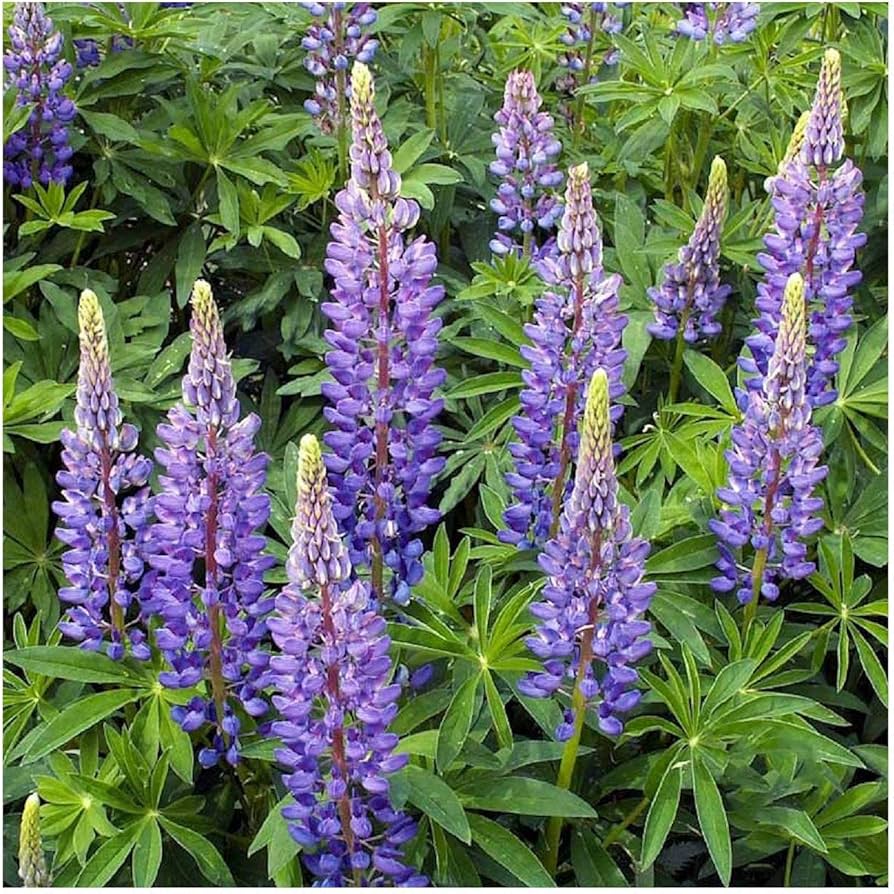European Lupine Lupinus polyphyllus wildflower seeds for decorative garden planting
Couldn't load pickup availability
Description
European Lupine Wild Seeds
Characteristics and Uses of European Lupine Wild Plants
European Lupine, known for its strikingly beautiful flowers and vibrant foliage, is a perennial plant that adds a touch of elegance to any garden. This wildflower produces tall spikes adorned with clusters of colorful blooms, ranging from blue to purple and even white, making it a favorite among gardeners and pollinators alike. The plant is not only visually appealing but also plays a vital role in improving soil health through nitrogen fixation. As a big, trusted name in the USA seed market, bijaseeds offers high-quality non-GMO seeds that ensure your gardening experience is both enjoyable and productive.
Growing Conditions for European Lupine Wild Plants
- Soil Type: Prefers well-draining, sandy or loamy soil rich in organic matter.
- Sunlight: Thrives in full sun to partial shade, requiring at least 6 hours of direct sunlight daily.
- Temperature: Grows best in moderate temperatures, ideally between 60°F to 75°F.
Planting Tips for European Lupine Wild
- Timing: Sow seeds directly outdoors in early spring or fall, as they require a period of cold stratification for optimal germination.
- Depth: Sow seeds about 1/2 inch deep in the soil.
- Spacing: Space plants 12 to 18 inches apart to allow for their growth and air circulation.
Watering Instructions and Tips
- Frequency: Water regularly, especially during dry spells, but avoid overwatering as Lupines prefer slightly dry conditions.
- Method: Water at the base of the plant to prevent fungal diseases on the foliage.
- Drainage: Ensure good drainage to prevent root rot, particularly in heavy soils.
Growing Zones
European Lupine plants are suitable for USDA zones 3 to 8 and can also thrive in global zones with similar temperate climates. This adaptability makes them a versatile choice for many gardeners.
Key Benefits & Uses
- Soil Improvement: Enhances soil fertility through nitrogen fixation, benefiting surrounding plants.
- Attractive to Pollinators: Attracts bees, butterflies, and other beneficial insects, promoting biodiversity.
- Low Maintenance: Requires minimal care once established, making it ideal for busy gardeners.
Best Uses in the Garden & Landscape
- Wildflower Gardens: Perfect for naturalizing and creating beautiful wildflower displays.
- Pollinator Gardens: Excellent for attracting and supporting pollinator populations.
- Border Planting: Ideal for planting along borders, adding height and color to garden edges.
Conclusion
In conclusion, European Lupine wild seeds are an excellent choice for gardeners looking to enhance their outdoor spaces with beautiful blooms and improved soil health. With the right care and conditions, these remarkable plants can flourish and provide stunning displays throughout the growing season. bijaseeds is a big, trusted name in the seed world, offering a wide range of high-quality, non-GMO varieties to gardeners everywhere.
FAQ
How do I grow European Lupine wild seeds?
To grow European Lupine wild seeds, sow them directly outdoors in early spring or fall, about 1/2 inch deep in well-draining soil. Water gently to keep the soil moist and ensure they receive adequate sunlight.
When is the best time to plant European Lupine wild seeds?
The best time to plant European Lupine wild seeds is in early spring or fall, as they benefit from a period of cold stratification for optimal germination.
Are European Lupine wild plants difficult to grow?
European Lupine wild plants are relatively easy to grow, requiring basic care such as adequate sunlight and moisture. With proper attention, they can thrive and produce beautiful flowers.



